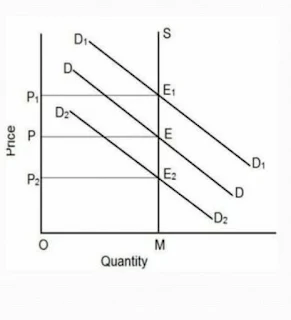Price & Output Decision Under Different Market Conditions
PRICE & OUTPUT DECISION
Description also available in video format (attached
below), for better experience use your desktop.
Introduction
·
Price is the
amount of money that you must pay in order to buy something
·
Pricing is a
process of fixing the value that a manufacture will receive in the exchange of
services and goods.
·
Output Decision is the
decision of how many goods or services to sell
·
Pricing and output decisions focus on where to
set the price for the product and how much quantity to supply.
·
A firm will choose to produce the quantity
where marginal cost is equal to marginal revenue, or where the marginal cost
and marginal revenue curves intersect.
·
However, pricing and output decisions depend on
the market structure.
·
In a perfectly competitive market, a firm’s
size is too small to impact the prices in a market. In which case, the firm
must be a price taker, so it must take the price given and decide how much
quantity to supply. In this type of market price is equal to the marginal
cost of production.
Different
Market Conditions Vs Pricing & Output Decisions
·
Perfect Competition Pricing Decision
o
Determined by the forces of demand &
supply
o
Point of intersection between demand &
supply curves determines the equilibriums price
o
Average Revenue = Marginal Revenue
·
Market Price of a Perishable Commodity
o
Examples are Fruits & Vegetables
o
Supply is limited and cannot be stored for
the next period of time
o
Commodity must be sold away on the same day
whatever the price may be
·
Market Price of Non-Perishable Commodity
o
Goods can be preserved and carried over to
the next market period
o
If the price is very high the seller will be
sell the whole stock
o
If the price is low the seller will not sell
any amount in the present but will hold back for some better time
·
Pricing Under Monopoly
o
A group of producers producing the same but
not identical product compete with each other in the market
o
They practice product-differentiation instead
of having a price war with each other
o
The price charged are quite competitive in
nature like
§ LUX
§ LOREAL
§ DOVE
o
The price of the product is determined by its
cost function, demand, objectives etc
o
Reduction in the price will increase the
sales
o
Increase in price will reduced demand
·
Pricing Under Oligopoly
o
Few sellers competing in the market
o
Each producer tries to understand the price
behaviour of other producers in the market before fixing the prices
o
Each oligopolistic believes that if he lowers
the prices, his rivals will also lower the prices, thus the upper portion of
the demand curve is price elastic
o
IF he increases the prices, the rivals will
not and therefore, he will lose customers and thus the lower portion of the
demand curve is inelastic.
Video
Description
·
Don’t forget to do
these things if you get benefitted from this article
o
Visit our Let’s
contribute page https://keedainformation.blogspot.com/p/lets-contribute.html
o
Follow our page
o
Like & comment
on our post
·









Comments